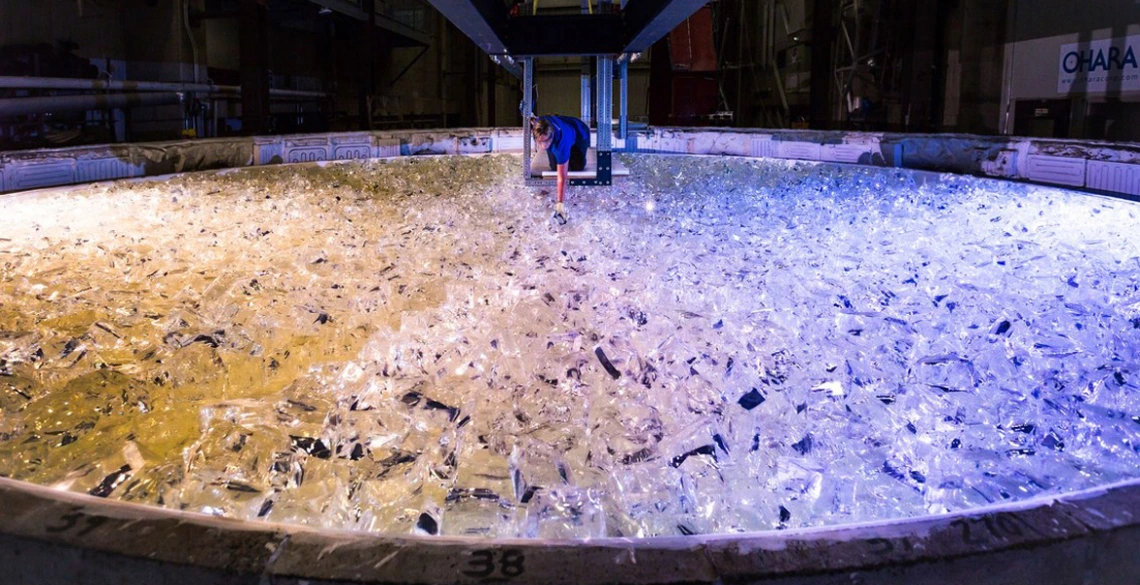The Astounding Engineering Behind the World's Largest Optical Telescope
The Giant Magellan Telescope mirrors built on the University of Arizona campus are engineering marvels destined for the planet's biggest optical observatory, which has already taken almost six years and $20 million to make.

Mirror Lab staffer Linda Warren places the last piece of glass into the mold for GMT mirror 5. (Photo: Giant Magellan Telescope/GMTO Corp.)
The Giant Magellan Telescope will be the largest optical observatory in the world. Its mirrors, each of which weighs roughly 17 tons, will be arranged in a flower-petal configuration, with six asymmetrical mirrors surrounding a central, symmetrical segment.
With a resolving power 10 times that of the Hubble Space Telescope, the telescope is designed to capture and focus photons emanating from galaxies and black holes at the fringes of the universe, study the formation of stars and the worlds that orbit them, and search for traces of life in the atmospheres of habitable-zone planets.
But before it can do any of that, the scientists and engineers at the Mirror Lab need to manufacture these colossal slabs of glass.
These are some of the most difficult mirrors ever manufactured. They're off-axis, they're aspheric, very large and ultra precise." -- Mirror Lab associate director Jeff Kingsley.

